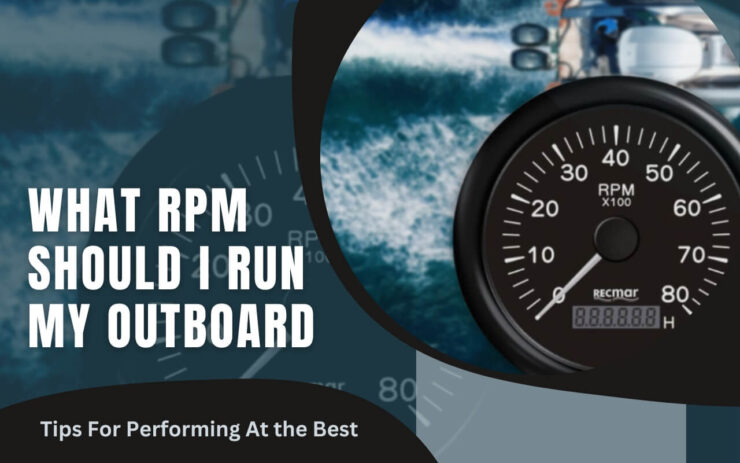This is certainly a loaded topic, but let’s pretend we’re only going from point X to point Y, and we’re just concerned with what’s optimal for the engine rather than peak speed. Let’s also assume calm seas.
So, what rpm should I run my outboard?
For cruising, the ideal RPM for outboards is 3000 RPMs. Trim out, set the throttle at 3000, and don’t plow. It is a waste of gas. If you are going on a fairly long way then you can keep it at 3500 RPMs. More than 3500 RPMs will not be fuel-efficient. That’s why between 3000-3500 RPMs is favorable.
An outboard engine must be configured correctly and maintained in order to perform to its full capacity. RPM ranges for various outboard models have been specified by the manufacturers.
Top boat manufacturers design their outboards with a size and pitch. This keeps the boat inside the acceptable operating parameters.
Let’s get going!
Table of Contents
Toggle7 Tips For Performing At the Best, Considering RPM

Outboards now are a significant improvement over those produced by the leading outboard manufacturers. Manufacturing breakthroughs, new, inventive designs, emission control, and new alloy steels.
As well as improved anti-corrosion coatings have all improved the overall quality of all brands.
However, in order to survive in what is basically a hostile environment. These devices must be configured correctly and maintained.
Boat manufacturers pick propellers with sizes and pitches that fit their perceived performance goals. Which is in order to obtain the greatest results. So, the things to consider are:
1. Make Sure the Top End Is In Order
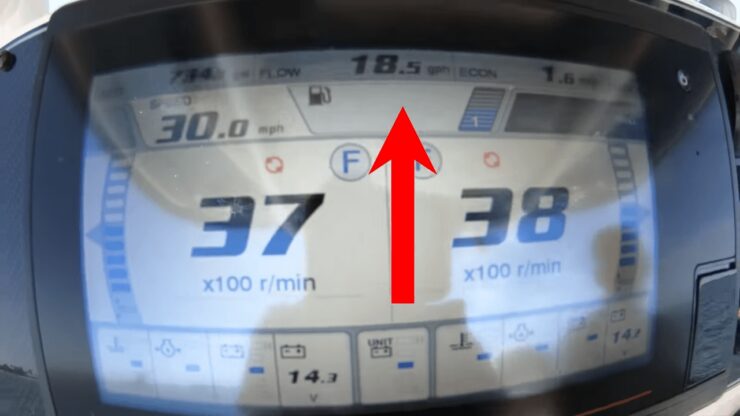
This is an alarmingly prevalent issue. The outboard(s) greatest feasible RPM is less than the manufacturer’s suggested wide-open-throttle RPM. Which is normally between 5000 and 6000 RPM.
Whenever an outboard is over-propped, the blades have too much pitch. Common Mistake – When evaluating a boat featuring outboards that barely exceed the appropriate RPM range. The engines can no extended reach the recommended peak RPM after installing gear.
This happens while filling the gasoline tanks. So make sure to you get rid of gas from the fuel tank. Some believe that no harm could be done if the engines were not running at or above the specified peak RPM. This is actually wrong. Over-propping a boat makes the engine work harder to achieve a particular RPM.
It increases combustion temperature and puts internal elements like rods and bearings under stress. On the other hand, under-propping a boat thus allows the turbine to spin beyond the manufacturer’s advice. RPM range may be just as dangerous.
As the engine over-revs, those poor metal pieces will be peddling frantically. It’s clear that a premature engine grave is a possibility. Pitch the propellers differently.
Increasing or decreasing the pitch on the propellers is the one variable you can readily change. Which is to adjust your boat engine’s wide-open-throttle RPM range.
2. Treatment of the Fuel
Fuel treatments keep your engine running at its best by cleaning the fuel system. Fuel treatment is critical. Everyone should be aware that ethanol gas may damage boat engines.
Particularly due to phase separation. This occurs when the water in the gasoline separates as from the fuel itself. This is a bigger issue in boats than in automobiles.
Since petrol sits in boats for much longer. However, even if mariners use their boats on a regular basis. They replace their fuel supply every few weeks, ethanol may still cause problems.
Even if ethanol-free gas is available, it is still necessary to apply an additive. Water tainting the gasoline supply has been a concern. Since far before biofuel was ever added to the system.
Partially filled cylinders on boats are prone to considerable condensation. Internal corrosion issues may substantially impede an outboard’s ability to perform.
3. After Every Use, Flush
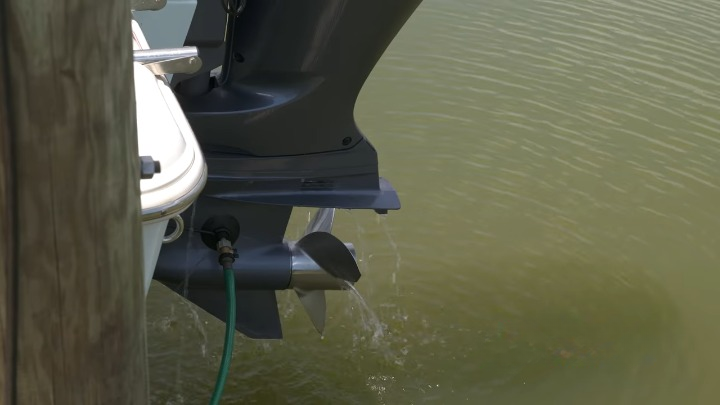
Regular seawater motor flushes are essential for any marine engine’s lifetime. Freshwater flushes maintain the cooling channels clean and free. It also prevents corrosion in numerous areas of the engine.
As well as help the water pump impeller last longer. Make flushing with freshwater a habit. Flushing the engine once a month is ineffective. You can also raise the motor to prevent the problem.
You should flush the engines for a week or two after usage. Hook the tube nozzle to the outboard soon after driving through into the slip. Dry storage or driveway, then flush according to the outboard manufacturer’s guidelines.
4. Gas and Gasoline Filters Should Be Replaced On a Regular Basis
Outboard engines spin at high RPMs all of the time, far higher than automobiles or trucks. With 4-stroke engines, maintaining fresh, fresh oil in the engine is critical. And cleaning the oil filters on a regular basis will assist to keep the oil fresher.
Because no oil changes or fuel filter replacements are required. 2-stroke engines are substantially less costly to maintain. As a result, 2-stroke outboard engines are much more cost-effective in high-use applications.
5. Engines Need Coolant At All Times
Starting an outboard engine without sufficient cooling water is a recipe for catastrophe. Water is required for marine motors at all times. Never start an exhaust nozzle without circulating the water adequately.
When an outboard has a water supply through earmuffs or hose fittings, it’s OK. It is ready to operate on land, but this should not ever be dry-started. Not for a split second.
The accumulation of heat isn’t the only problem. The impeller of your water pump requires water for lubrication. A single dry start of your engine may ruin that impeller in a matter of a few seconds.
6. Keep the Props In Good Working Order
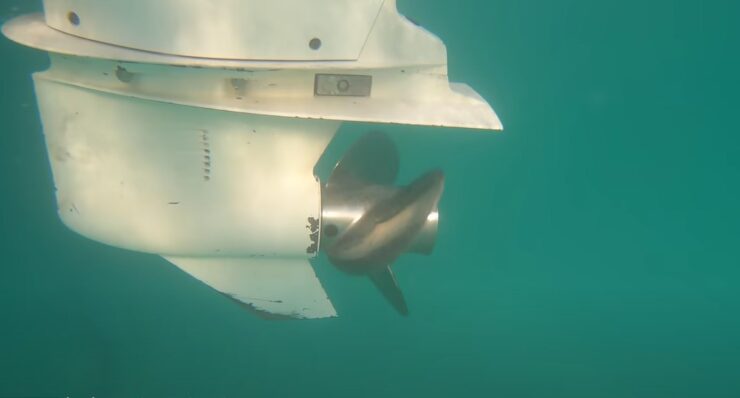
A bent or broken propeller may create complications such as loosening screws and bolts. A broken or damaged propeller is harmful for the whole boat, not just the engine.
Vibration is the issue. A twisted or broken prop may create a lot of vibration, which is bad for bearings and seals.
7. Make Use of Your Outboard Motor
Allowing an outboard motor to remain idle is very dangerous. Seals deteriorate, grease collects dust, condensation forms, and components corrode. Allowing a marine engine to sit idle for extended periods of time is among the worst actions.
A boat may be sitting for more than a few weeks. The operator should start it and let it spin until it reaches working temperature. This is a fantastic reason to utilize your boat if you really need one.
Perform a WOT RPM Test
One of the things you can do to make sure your outboard is running smoothly is to perform a WOT RPM (Wide-Open Throttle Revolution Per Minute) test. This test can help you identify any problems with your engine and make sure it’s running at peak performance. Here’s how to perform a WOT RPM test on your outboard.
Step 1: Get Your Tools
Before you start, you’ll need to make sure you have the right tools on hand. You’ll need a tachometer to measure the RPMs, as well as a timing light and a set of spark plug leads. You’ll also need a test tank or access to a body of water where you can safely run your outboard.
Step 2: Warm Up Your Engine
Start your engine and let it run for a few minutes to warm up. This will ensure that your outboard is running at its normal operating temperature and is ready for the test.
Step 3: Connect Your Tachometer
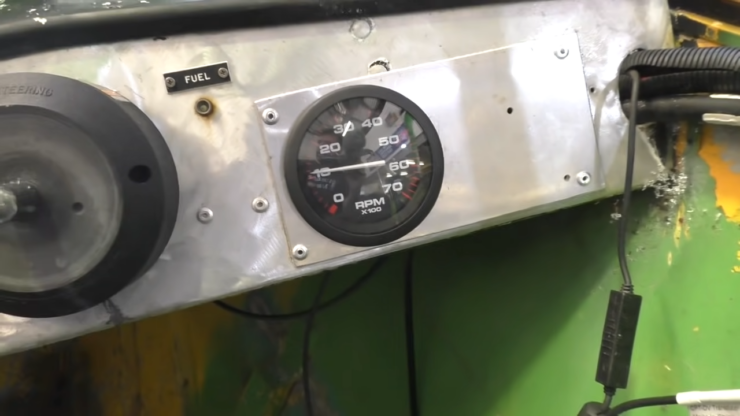
Connect your tachometer to your outboard’s tachometer port. The tachometer port is usually located near the top of the outboard’s lower unit. Follow the manufacturer’s instructions for connecting the tachometer.
Step 4: Set Your Timing Light
Connect your timing light to the spark plug leads. The timing light should have instructions for how to do this. Set the timing light to the “advance” setting.
Step 5: Run Your Outboard
Place your outboard in the test tank or in the water. Make sure the water intake is clear and that the engine is receiving water. Run your outboard at wide-open throttle for a few seconds.
Step 6: Check Your RPMs
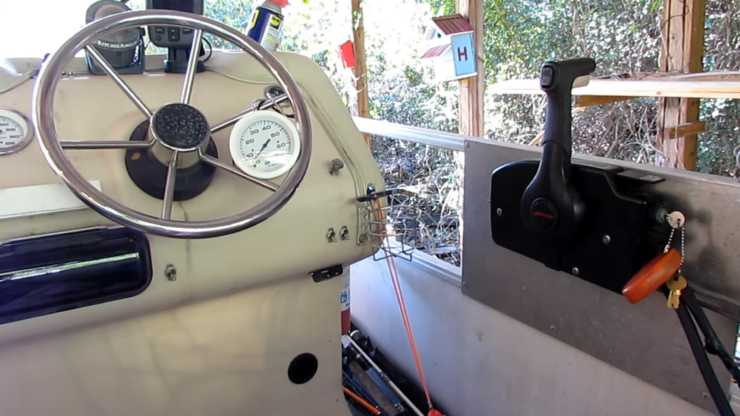
Watch the tachometer to see what the RPMs are at wide-open throttle. The manufacturer’s specifications for your outboard will tell you what the ideal RPM range is. If your RPMs are too high or too low, you may need to adjust your outboard’s carburetor or timing.
Step 7: Check Your Timing
While you’re running your outboard at wide-open throttle, use the timing light to check your timing. The timing light should show that the spark is occurring at the correct time. If the timing is off, you may need to adjust the timing or replace the spark plugs.
Step 8: Shut Off Your Outboard
Once you’ve completed the test, shut off your outboard and disconnect your tools. Make any necessary adjustments to your outboard’s carburetor or timing, and then run the test again to make sure everything is working properly.
Performing a WOT RPM test on your outboard is an important part of regular maintenance. It can help you identify any problems with your engine and ensure that it’s running at its best. By following these simple steps, you can perform a WOT RPM test on your outboard and keep it running smoothly for years to come.
FAQs
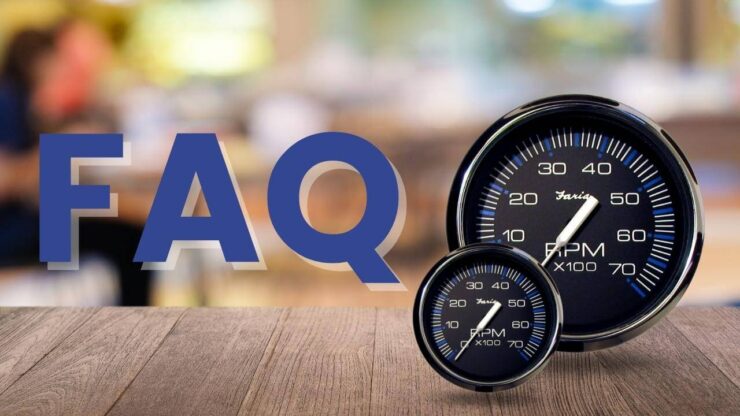
Is It Necessary To Use Your Outboard Engine At Full Throttle?
Definitely not. Modern engines are built to withstand WOT. It’s also vital to get to WOT during break-in. As directed by the owner’s handbook, to correctly seat the piston rings.
What Is Perhaps The Most Fuel-Efficient Boat Speed?
The most optimal running speed for most boats is between 25 and 30 mph. Beyond 1800 rpm, diesel engines hit their sweet spot. It’s commonly seen between 3000 and 3500 rpm on gasoline outboards.
An Outboard Motor Gets How Often Miles Per Gallon?
A basic cabin cruiser should get between 1 and 2 fuel economy. Cabin cruisers are one of the least fuel-efficient boats available to most recreational boaters. Proper maintenance and cautious sailing, on the other hand, may enhance the boat’s gas economy.
Should I raise or lower my outboard?
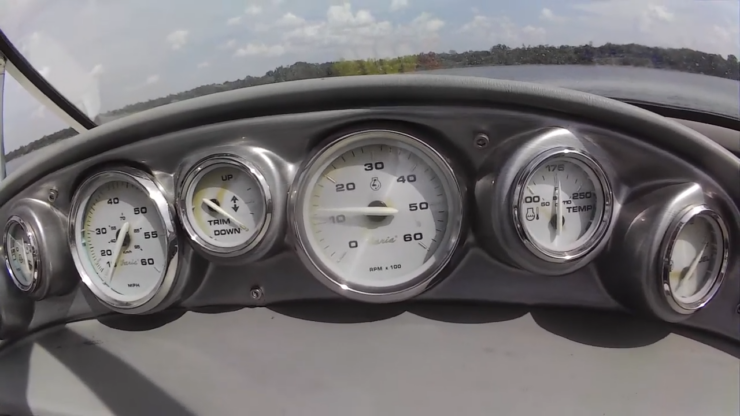
Here are some factors to consider when deciding whether to raise or lower your outboard:
- Water Depth: If you are in shallow water, you may need to raise your outboard motor to avoid hitting the bottom. Conversely, in deeper water, you may want to lower your outboard motor to provide more stability and control.
- Boat Speed: Raising the outboard motor can help reduce drag and improve speed, while lowering the outboard motor can help improve handling and stability at slower speeds.
- Sea Conditions: In rough seas, you may want to lower your outboard motor to maintain stability and control. Conversely, in calm conditions, raising the outboard motor can reduce drag and increase speed.
- Boat Trim: The position of your outboard motor can affect your boat’s trim, or how it sits in the water. Raising the motor can cause the bow to rise, while lowering the motor can cause the bow to lower. Adjusting the trim can help improve fuel efficiency and speed.
- Propeller Depth: The depth of your propeller can also affect performance. A propeller that is too deep can cause drag and slow your boat down, while a propeller that is too shallow can cause cavitation and damage to the propeller.
In summary, raising or lowering your outboard motor depends on a variety of factors, including water depth, boat speed, sea conditions, boat trim, and propeller depth. It’s important to consider these factors and adjust your outboard motor as needed to optimize performance and ensure safe boating.
Is it OK to leave outboard tilted up?
Leaving your outboard motor tilted up for short periods of time is generally not harmful to the motor. In fact, many boaters prefer to store their boats with the outboard motor tilted up to reduce drag and prevent marine growth on the lower unit. However, it is not recommended to leave your outboard motor tilted up for extended periods of time, as this can cause problems.
Conclusion
So, by now you already have got the answer, what rpm should I run my outboard?
Use your outboard according to the favorable RPMs. And don’t let your outboard motor remain idle for a long time. Use it frequently and enjoy!
Have a great day!
I’m Liam Jackson, the proud owner and driving force behind KayakPaddling.net. Born somewhere in the expansive beauty of the United States, I’ve nurtured a lifelong passion for kayaking and fishing that has led me to explore the far corners of our nation’s waterways.
Related Posts:
- 15 Best Baitcasting Reel Under $100 2024 - Improve…
- 16 Best Kayak For Beginners 2024 - Kayaking Adventure Gear
- 17 Best Trolling Reels 2024 - Enjoy your Fishing Adventure
- Heavy Duty Fishing: 11 Best Rods And Reels For Big Fish 2024
- 10 Best Inflatable Paddle Board 2024: My Top 10 iSUP…
- 12 Best Beach Wagons & Carts 2024 - For All-Terrain

